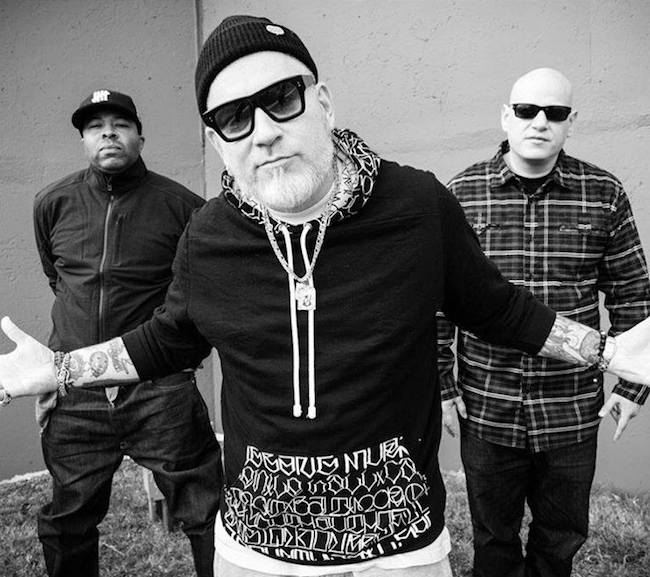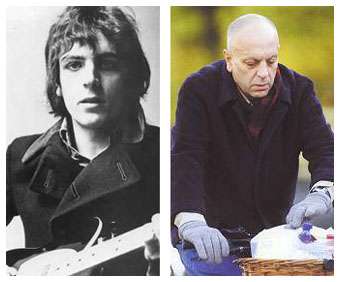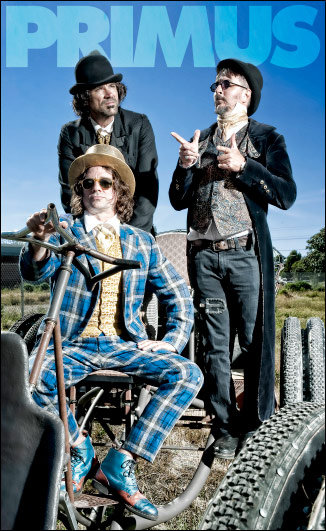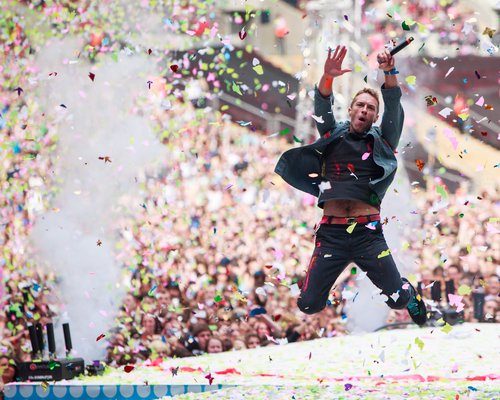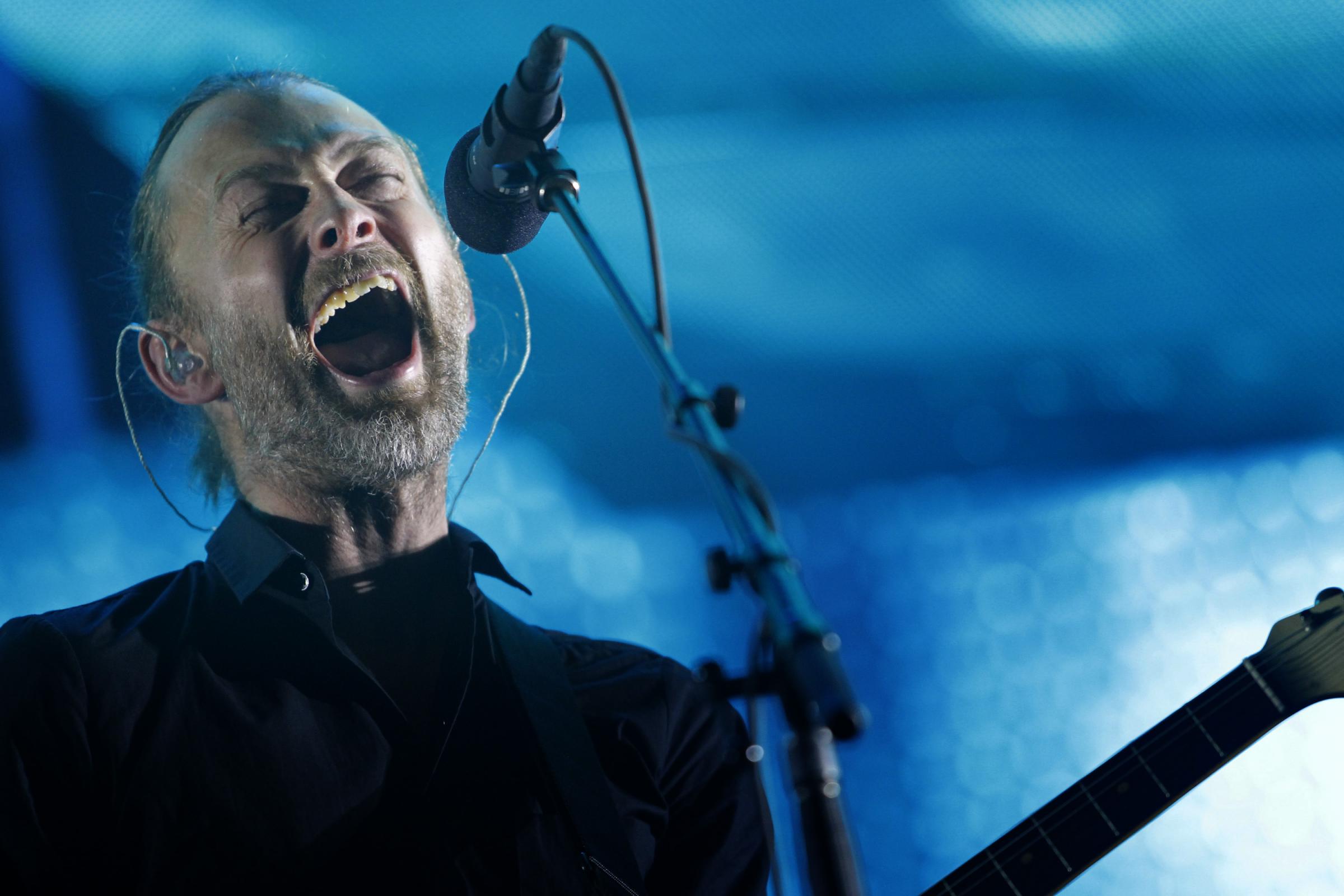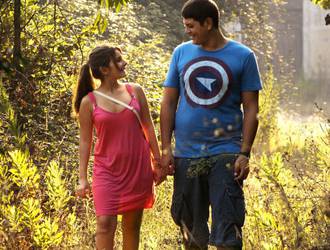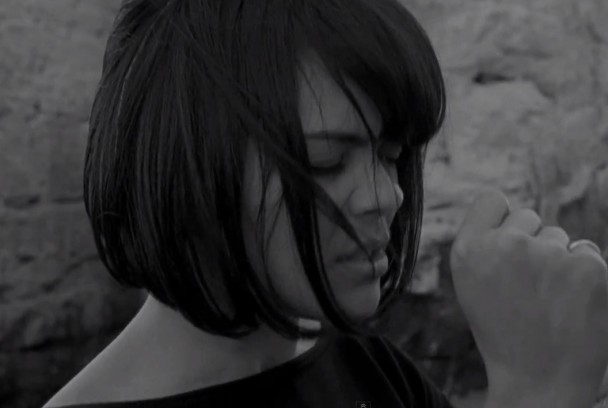A pochi giorni dall’inizio della nota rassegna berlinese Berlin Atonal edizione 2018, abbiamo intervistato l’artista svizzera Martina Lussi che si esibirà nella capitale tedesca con un live in uno dei cinque giorni di festival nell’ex centrale elettrica, la Kraftwerk Arena, precisamente il giovedì 23 agosto sullo stage dell’OHM.
La giovane artista di base nella città di Lucerna, rappresenta attualmente una delle vere novità musicali distinguendosi nei suoi lavori con grande qualità e determinazione.
Martina Lussi si muove in un incrocio tra sound art, composizione, installazione e performance dal vivo con la caratteristica di riuscire ad utilizzare il suono come mezzo, ispirandosi a tutto ciò che la circonda fino all’inconscio della sua mente. I suoi lavori si basano su costruzioni elettroacustiche di veri e propri ambienti sonori, tra tappeti drone e registrazioni field.
Il suo debut album “Komposition O08”, Präsens Editions, è datato 2014 mentre il più recente “Selected Ambient“, uscito nel 2017 su etichetta Hallow Ground, è la dimostrazione di quanto detto in precedenza, con le tracce che prendono il nome da alcune gemme preziose – Sodalite, Agata, Quarzo Citrino e Opale – attribuite culturalmente e tradizionalmente a poteri speciali.
In attesa della sua prima perfomance dal vivo a Berlino, abbiamo posto alcune domande all’artista svizzera.
Autore: Crescenzo Di Vano
FO: Ciao Martina, mancano pochi giorni all’inizio del Berlin Atonal. Come stai vivendo questa grande attesa per il tuo primo spettacolo a Berlino?
ML: Al momento, sono in una residenza di ricerca al Cairo per un mese.
Qui, sto lavorando soprattutto a progetti successivi; raccolgo suoni, ascolto concerti e incontro nuove persone. Cerco di stare cool anche nel calore, restare cool credo sia la migliore preparazione! Prima di venire a Città del Cairo ho finito un nuovo album e ciò mi porta indecisione su cosa andare a suonare al mio set all’Atonal, ma alla fine credo che suonerò anche alcuni dei pezzi nuovi.
FO: L’ex centrale elettrica, la Kraftwerk Arena, è l’ambientazione perfetta per la tua visione musicale. Un ruolo fondamentale lo veste anche la qualità del pubblico che assiste con massima attenzione. Per un’artista quanto è importante avere questi due fattori essenziali?
ML: Lo spazio e il pubblico sono due dei principali fattori legati all’atmosfera oltre che al suono. Se tutto si associa in modo positivo, si valorizzano l’un l’altro a vicenda senza poter dire se è grazie allo spazio, al pubblico o al suono. Il tutto diventa un’unica cosa, perdendoti dentro. Spero che è ciò che succederà all’Atonal!
FO: Che differenze trovi personalmente tra gli ascoltatori di un live in una situazione di concerto e in quelli che assistono a installazioni sonore in ambienti differenti?
ML: La differenza principale è l’ambiente stesso che influisce sugli ascoltatori e quest’ultimo influenza il modo in cui ci lavoro.
Se faccio un lavoro per un’installazione sonora site-specific, osservo lo spazio, il sound-system, penso al modo in cui le persone entrano nello spazio e per quanto tempo potrebbero rimanere, cercando suoni che abbiano senso in quello specifico ambiente. Posso quindi controllare un pò le emozioni delle persone.
In generale, si può dire che per un’installazione le persone sono concentrate, per lo più da sole o in piccoli gruppi e non sanno quando inizia il pezzo e quanto tempo impiega lo stesso nell’installazione.
Entrano nell’installazione nella parte centrale e decidono per quanto tempo rimanere connessi e devi farli rimanere il tempo necessario, il che è difficile.
Un live set lo vedo come una sorta di presentazione di suoni diversi, è un’istantanea di ciò che ho fatto finora.
(Devo dire che finora non ho lavorato a spettacoli dal vivo su commissione, penso che sia diverso: lì hai tempo per lavorare davvero con lo spazio, il pubblico, l’intera ambientazione).
Gli ascoltatori di un concerto sanno quando il concerto inizia e finisce, la maggior parte delle volte non sono soli ma circondati da molti sconosciuti, gli stati d’animo sono diversi e più estremi, forse euforici, tristi e la gente può essere anche ubriaca o innamorata…
…In generale, direi che l’atmosfera diventa più vertiginosa, la reazione è più diretta e le emozioni possono cambiare velocemente.
Anche se hai le stesse persone in un’installazione e in un concerto, essi si trovano in ruoli e in situazioni diverse, quindi non sono uguali.
Nelle installazioni ho spesso la sensazione che le persone siano estremamente concentrate e difficilmente cercano di capire e riflettere sul lavoro teorico, hanno un ascolto più analitico e allo stesso tempo si perdono per divertirsi e fidarsi delle proprie emozioni.
Invece in una situazione di concerto, come in un club, le persone rimangono per la durata del concerto, quindi è il contrario.
Forse è meglio scambiare le due impostazioni ed è quello che cerco di fare nel mio lavoro.
Mi piace cambiare le diverse impostazioni e mixare suoni inizialmente costruiti per contesti “diversi”. Un buon lavoro ha sempre diversi punti di accesso, può sopravvivere in contesti diversi e può essere di riflesso da persone con background e interessi diversi.
FO: Ho ascoltato più volte il tuo album “Selected Ambient”, il titolo poteva chiarire subito l’argomento che va a trattare, in realtà ho trovato una profondità sonora di grande spessore. Hai un tuo modo personale di descrivere il tuo genere musicale?
ML: Come ho spiegato anche in altre interviste, uso tutto ciò di cui sono circondata per il mio lavoro; penso che il termine “ambient” rifletta proprio questo perché è proprio il termine più aperto che conosco. Penso che un genere sia sempre una convenzione. Quindi ne ho scelto uno che abbia senso per me perchè in qualche modo le persone hanno bisogno di averne almeno uno. Devo dire che per me va bene, se altre persone discutono di questo problema, sono felice se si trova un altro termine che si adatta.
FO: Che relazione trovi tra le gemme preziose citate nei titoli del tuo album con il corpo umano?
ML: A volte porto con me una pietra, al momento una di sodalite. Mi piace il colore e la forma di questa gemma e mi ricorda ciò che voglio ottenere, il che mi dà energia in qualche modo. Allo stesso tempo sono convinta che potrei facilmente trasportare qualche altro oggetto e penso che avrebbe lo stesso effetto. Se trovi una connessione con un oggetto, un luogo, un’opera d’arte…in qualche maniera ti restituirà qualcosa. Ma per me questo non è né un mistero, né una magia, ma forse ha più a che fare con la fisica e la psicologia.
Credo in una logica dietro le cose, in questa logica non ho bisogno di capire il momento da approfittare, perché funziona tutto perfettamente per me. E’ lo stesso modo in cui utilizzo il mio istinto e le mie emozioni mentre lavoro: è uno strumento reale e non un potere più elevato o qualcosa del genere.
FO: Lawrence English ha lavorato al mastering del tuo album “Selected Ambient”; hai avuto un buon riscontro dalla sua opera?
ML: Mi piace molto Lawrence come artista e ha fatto un buon lavoro come ingegnere mastering … Apparentemente, Lawrence ha detto a Remo Soland, che gestisce Hallow Ground e che era in contatto con lui per il lavoro, che pensa che sia una bella pubblicazione e questo mi ha fatto molto piacere sentirlo.
FO: Trovo il tuo modo di lavorare molto professionale, qual è il tuo approccio nel processo di registrazione? Quanto è importante per te mettere in relazione lo spazio e il suono?
ML: In alcuni pezzi prendo un suono concreto o un ambiente sonoro come punto di partenza. Quindi inizio a registrare e ad ascoltarlo. Capita a volte, che se lavoro per uno spazio specifico, ad esempio, potrebbe esserci un ambiente sonoro che si sovrappone al mio suono, quindi cerco in qualche modo di comporre attorno a questo. Lavorare con il suono si tratta sempre di creare e definire uno spazio. Forse il mio lavoro si è sviluppato così perché quando ho iniziato a lavorare con il suono era pensato per le installazioni. Inoltre non avevo idea di scrivere “musica”veramente, quindi ho iniziato con le registrazioni e ho cercato sempre di più di capire ciò che sentivo. E da lì ho adattato e ampliato tutto.
FO: Last but not least…ci potresti stilare una tua top 5 degli artisti presenti al Berlin Atonal?
ML: Mi meraviglia che…
1. Klara Lewis
2. Actress
3. Jay Glass Dubs
4. Group A with Dead slow ahead
5. Beatrice Dillon
…parteciperanno, ma la mia top 5 la potrò stilare successivamente perché non è facile predire il futuro – ci sono moltissimi artisti interessanti coinvolti.
* * * ENGLISH VERSION * * *
FO: Hi Martina, there are still a few days at the beginning of the Berlin Atonal. How do you live, how are you spending this waiting for your first show in Berlin?
ML: At the moment, I’m in a research residency in Cairo for one month. Here, I’m mainly working on further projects – collecting sounds, listening to concerts and meeting people. And I try to stay cool in the heat. Staying cool is the best preparation I think!
Before I came to Cairo I just finished a new album. That is why I also think about what to play it live. I think I will play some of the pieces in my set at Atonal.
FO: Kraftwerk Arena is the perfect scenario for your musical vision and a fundamental role is also played by the audience who attends with great interest. How important is it for an artist to have these two essential factors?
ML: Space and audience are two of the main factors related to the atmosphere besides the sound. If everything comes together in a good way it enhances each other positively and you cannot tell if it is because of the space, the audience or the sound. It’s all just one and you lose yourself in it. I hope that’s going to happen at Atonal.
FO: What differences do you find among the listeners of a live in a concert and in those that assist in sound installations in different environments?
ML: The main difference is the environment itself that affects the listeners. And that influences the way how I can work with it. If I make a work for a site-specific sound installation I observe the space, the soundsystem, think about the way the people enter the space and how long they might stay… and I search for sounds that make sense in this specific environment. So I can control the emotions of the people a little bit. Generally speaking, you can say that in an installation the people are concentrated, mostly alone or in small groups and they mostly don’t know when the piece starts and how long the sound piece in the installation takes, so they enter the installation in the middle of the piece and decide how long they stay and you need to make them stay as long as necessary, which is tricky.
A live set I see as a kind of presentation of different sounds it’s a snapshot of what I did so far.
(I have to say that so far I haven’t worked on commissioned live shows; I think that’s different. There you have time to really work with the space, the audience, the whole setting.)
Listeners of a concert know when the concert starts and ends, most of the time they are not alone and surrounded by a lot of strangers, the moods are more extreme and diverse—maybe euphoric, sad—and the people are drunk or in love … In general I would say the atmosphere becomes more dizzy, the reaction is more direct and the emotions can change fast.
Even if you had the same people in an installation and in a concert, they find themselves in different roles and situations so they are not the same nonetheless. In installations I often have the feeling that people are extremely concentrated and hardly try to understand and reflect the work theoretically, listen more analytical and at the same time lose to just have fun and trust their emotions. And in a concert situation—like in a club—were people mostly stay for the duration of a concert it’s more the other way around. Maybe it’s best to swap between those settings (and others maybe). I think that’s what I try to do within my work. I like to change the setting and also to obviously mix the sounds initially built for “different” contexts. A good work has always different points of access, can survive in different contexts and can be reflected by people with different backgrounds and interests.
FO: I listened to your album “Selected Ambient” several times, the title could immediately clarify the topic of which it deals and in reality I have found a sound depth of great thickness and a great stylistic variety. Do you have a personal way to describe your genre?
ML: As I explained in other interviews, I use just everything I am surrounded with for my work; and I think the term ambient reflects this, because it’s the most open term I know. I think a genre is always a convention. So I just picked one that makes sense to me because somehow people need one at least. But I have to say that for me it’s ok, if other people discuss this issue. And I’m happy if they find another term that fits.
FO: What relationship do you find among the precious gems mentioned in the titles of your songs with the human body?
ML: I sometimes carry a stone with me, at the moment it’s a Sodalith. I like the color and shape and it reminds me of what I wanna achieve, which gives me power somehow. At the same time I am convinced that I could easily carry some other object and I think it would have the same effect. If you find a connection to an object, a place, a piece of art … somehow it will give you something back. But to me this is neither a mystery nor it has something to do with magic or so. Maybe it has more to do with physics and psychology. I believe in a logic behind things. This logic I don’t need to understand the moment I take advantage of it, because it just clearly works for me. It’s the same way I use my instinct and emotions while working—it’s a real tool, and not a higher power or so.
FO: Lawrence English has worked on the mastering of your “Selected Ambient”; Did you get a good response from his work?
ML: I like Lawrence’s work as an artist and he made a good job as a mastering engineer… Apparently, Lawrence told Remo Soland, who runs Hallow Ground and who was in touch with him for the job, that he thinks it’s a lovely edition, which made me happy to hear.
FO: I find your way of working very professionally. Space seems to become sound…what is your approach in the process of composition and recording?
ML: In some pieces I take a concrete sound or sound environment as a starting point. Then I start to make recordings and listen to it. Or sometimes, if I work for a specific space for example, there might be a sound environment overlaying my sound, so I somehow try to compose around that. If I work with sound it’s always about creating and defining a space. Maybe my work developed like that because when I started to work with sound it was meant for installations. And also I had no idea of writing “music” really, so I started with recordings and tried more and more to understand what I hear. And from there have I adapted and expanded everything.
FO: Last but not least…would you like to add your own top 5 of the artists present at the festival?
ML: I’m wondering what …
1. Klara Lewis
2. Actress
3. Jay Glass Dubs
4. Group A with Dead slow ahead
5. Beatrice Dillon
… will do. But the real top 5 I can tell you afterwards, because I think it’s hard to predict the future—there are so many interesting artists involved.


















